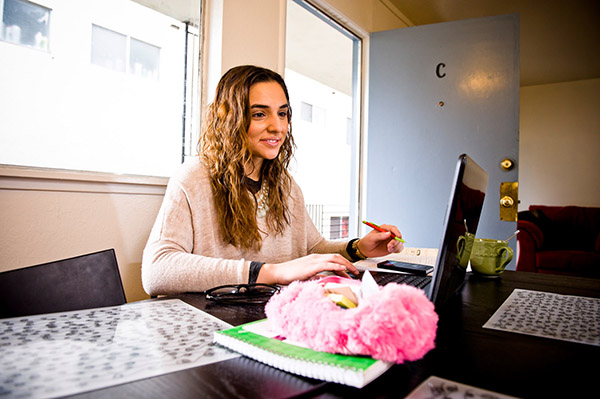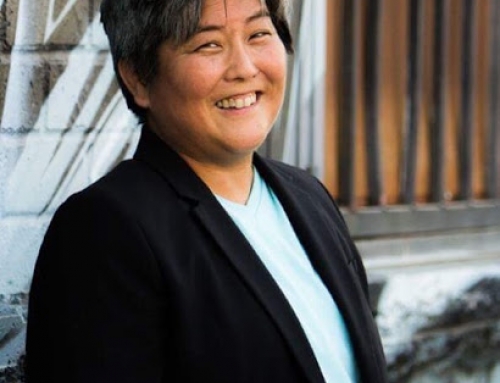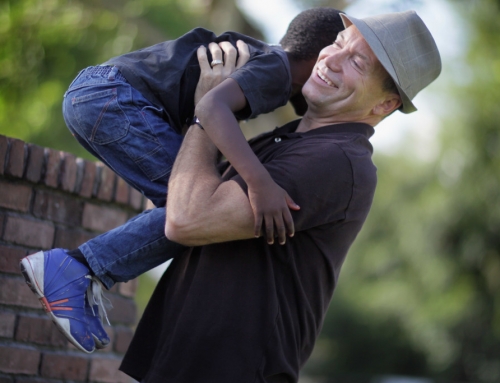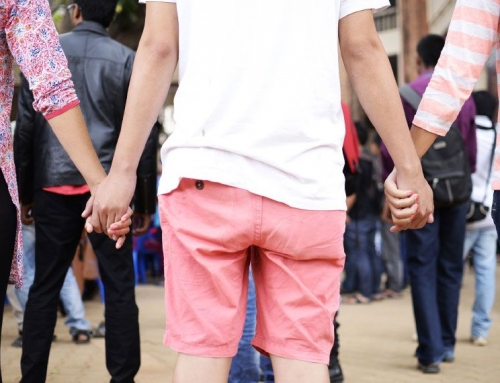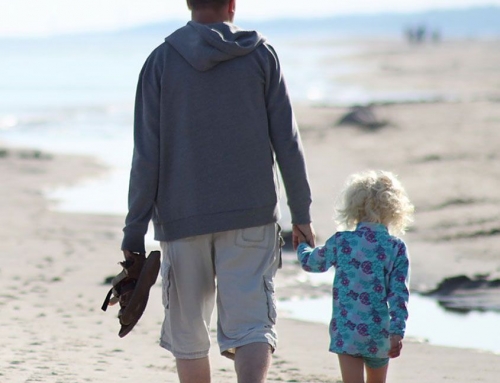THIS IS HOW YOU END THE FOSTER CARE TO PRISON PIPELINE

Moments of stability were rare during Pamela Bolnick’s childhood. She repeatedly witnessed her father beat her mother, a Venezuelan immigrant diagnosed with schizophrenia. Bolnick’s mom eventually left her abusive spouse, fleeing to the Bay Area with her two kids. When she stopped taking her medication, the county child welfare department stepped in and placed six-year-old Bolnick and her younger brother in foster care. Her mother resumed treatment for her mental illness, and for two short years, retained custody of her children. After another relapse, Bolnick and her sibling were permanently removed from their home.
Bolnick was placed with her godparents in Richmond, Calif., an East Bay city then known for its notoriously high murder rates. Toughened by her childhood, she excelled at El Cerrito High School, impressing teachers in her Advanced Placement classes and filling her schedule with softball games and dance rehearsals. By senior year, however, she felt her foster family was pressuring her to move on. “All this time, I looked at them as being my own family. I did everything that you’d expect of a child, going to school, not getting into trouble, applying to college,” Bolnick says. “I came to see it as a business transaction: them being paid [by the government] for taking care of me, and me getting the benefit of being a child in their custody.” Disgusted, she left and spent the summer living at friend’s house. Shortly afterwards, she enrolled at Holy Names University in nearby Oakland Hills.
Alone for the first time, juggling 19 credits of core classes and a full-time job overwhelmed Bolnick. Short on time and seared by her past relationships, she distanced herself from others. “I almost grew to believe that I could be this Superwoman figure,” she recalls. “It burned me out completely. I didn’t have time to enjoy my first year of college, a time that’s supposed to be so liberating. I had finally reached the only thing my mother wanted me to do, and it made me so sad knowing I wasn’t happy.” Bolnick dropped out. Her foster parents refused to take her back, and without a permanent place to go, she couch-surfed at friends’ dorms.
The foster care system is one of America’s most troublesome institutions: chronically underfunded and largely uninformed and unsuccessful at raising children much better than the parents from whom they were removed. Its primary recipients — children under the age of 18 — have no political leverage, so policy decisions are often driven by scandals. In New York City, for example, after a mother killed her daughter in 1995, thousands of kids were forcefully removed from their homes, but when troubles beset the administration in 2005, the pendulum swung in the opposite direction. While the system as a whole has experienced some reforms (motivated by Victorian sensationalism, as Jill Lepore documents in The New Yorker), a subset of its population gets little attention: those who “age out” of the system.
Each year in California, several thousand youth exit foster care immediately upon turning 21 years old. (Previously emancipated at 18, youth care was extended by a 2012 state law.) Longitudinal studies by researchers from University of Chicago’s Chapin Hall Center for Children found that 24 percent of youth were homeless after exiting the system and nearly half had been incarcerated within two years. Perhaps most shockingly, 77 percent of the young women reported a pregnancy, risking another generation reentering the system.
While other children can mature gradually, relying on their parents for emotional advice or a bit of extra cash, these youth are entirely on their own. Amy Lemley, a former case manager at a group home for foster youth in Boston, remembers teenagers celebrating their 18th birthdays by stuffing their few belongings into a backpack and saying goodbye. “We kind of looked the other way and pretended that it was going to work out, but we knew that it wasn’t,” she says. Recognizing that these kids needed help transitioning into adulthood, Lemley enrolled in a public policy graduate program at the University of California, Berkeley, and with her classmate and “kindred spirit” Deanne Pearn, the women founded an organization in 1999 to provide that support.
Headquartered in Oakland, Calif., First Place for Youth provides emancipated youth in five Bay Area counties and Los Angeles with their very first apartment, covering both the security deposit and the monthly rental fees. Last year, 464 youth moved into these residences. Most stay in the program for around 18 months; some kids drop in for 30 days, while others stay for three years, current First Place for Youth CEO Sam Cobbs says. Before exiting, the organization assists the young adults meet four main goals: find stable employment, locate housing that matches their income, complete two semesters of community college or a certificate program and, finally, achieve “healthy living,” which means avoiding arrests, unintended pregnancies and substance abuse.

The program’s scope wasn’t always so large. The way Lemley originally envisioned it, housing would be enough. But after realizing that some First Place participants couldn’t read, she quickly pivoted, including educational and career services as well. Targeting a group that’s significantly behind their peers, First Place’s goals are modest. “I can tell you, we don’t have anybody at Goldman Sachs,” Claudia Miller, the group’s spokeswoman says. Instead, it aims for participants to land jobs that provide a livable wage, like a paralegal, nurse or solar panel installer. A full 86 percent obtain employment, and 91 percent attend college. (The program did not provide numbers on how many complete their education.)
“This program is not a handout; it is a hand up,” Cobbs says. “What we’re doing is trying to help you understand and make choices so that you can provide for yourself. You have to meet us, if not halfway, at least 30 percent, and invest in your own future. Which I think is one of the reasons it’s such a big success: it depends on them.”
Bolnick heard about First Place for Youth through a college counselor, who advised her that the program could provide her with the financial and emotional support she needed. Feeling like she was “working to live each day,” Bolnick initially signed up for just classes. But after dropping out of Holy Names University, experiencing a brief period of homelessness and crashing with friends for a bit, she moved into housing provided by First Place.
The transition wasn’t always easy. Like in her dorm room, she shared the space (a two-bedroom apartment in San Leandro, Calif.) with another teenager, this time a foster youth who’d faced her own hardships. At first, the pair bonded, but soon Bolnick felt that her roommate began to shirk responsibilities, hanging around at home and smoking pot and cigarettes, even after she found out she was pregnant. “It literally put a flash of light in front of me, knowing there are kids out there who don’t even want to make a difference in their life,” she says. The environment became so tense that Bolnick couldn’t take it anymore and had to move to another apartment. There, Bolnick found another First Place participant who became like “a little sister to me.”
It’s a result that can’t be quantified, but Bolnick says First Place provided a community that understood her. After losing both parents (her father left the picture when the family moved to California, and her mother committed suicide) and then feeling betrayed by her foster family, Bolnick learned to distance herself from those closest to her. Before getting to First Place, she didn’t express any emotions related to her upbringing. She couldn’t tell her little brother how scared she was for fear of traumatizing him, and she kept her biological parents a secret through high school so that her friends wouldn’t pity her. Getting to know other emancipated youth at First Place helped her, Bolnick says, not because they necessarily knew the specifics of her story, but because each of them had a similar experience to share. Up until her early 20s, she says she never knew what it was like to cry. When asked what the rush of emotions feels like now, Bolnick says simply, “I appreciate it.”
Foster youth “have completely normal behavior,” Cobbs says, “and what I mean by that is, if you are moved nine times, then you probably wouldn’t establish relationships really quickly. It is normal behavior to protect yourself from building intimate relationships, because every time you get attached, you get hurt. It’s abnormal not to do that.”

Today, Bolnick pays for her own apartment near Oakland, where she bikes and reads by Lake Merritt. She’s working full-time as an assistant manager for a high-end fashion company, and she’s saved enough money to take a two-week trip to Venezuela to meet her mother’s family. Within the next year, she plans to complete her last semester of community college and apply to U.C. Berkeley, where she’s planning to major in biophysics (the next step towards her goal of practicing pediatric neurosurgery) and minor in sociology (a way to understand where she’s been and what she’s faced). She spoke to NationSwell, she confessed, partially because she wanted to hear more about the neighborhood around New York University in downtown Manhattan where she plans to go to medical school. But she also mentioned she wanted to talk because she feels she has an important story to share — one that has a brighter ending than her mother’s.
Why was Bolnick able to beat the odds? Some of the latest scientific research on trauma might call it grit or resilience — an inborn ability to overcome. In her words, “I think it has to do with seeing the light behind all the blockages that get in the way. It takes a lot mentally,” she explains. “If I keep telling myself I am a foster kid, I am a Latina woman, I live in Richmond and all of my friends are doing the same things that people expect me to do, I should just as easily do that. But I never once had that thought at all. I just wanted to make the best of what I had.” Bolnick also credits First Place for Youth for providing her with the network she needed to halt a situation that was spiraling out of control. She says the nonprofit gave her “stability, stability, stability.”
With results like that, Cobbs wants to see the model expand across the country, whether it’s run by his organization or a partner. He acknowledges specific benefits — support for transitional housing in Sacramento and a top-notch community college system statewide — that make the model work in California, but he also points to challenges, including the Golden State’s high cost of living and the fact that it is the largest foster care system in the country (largely because it hasn’t been as aggressive in returning kids to their homes, even if conditions improve, and because a flood of orphaned immigrant children keep adding to the total, he says). If replicated in just 10 more cities nationwide, Cobbs says that about 70 percent of America’s foster youth could have another option available to them.
Before Lemley founded First Place for Youth, the safety net for America’s foster youth abruptly disappeared at age 18, abandoning these vulnerable children at the most critical moment. First Place for Youth lengthens and stabilizes that transition to adulthood. Homelessness and jail-time are no longer mandatory chapters in stories about foster care. With the organization’s work, emancipated youth finally have a home to call their own.
Homepage photo courtesy of First Place for Youth

